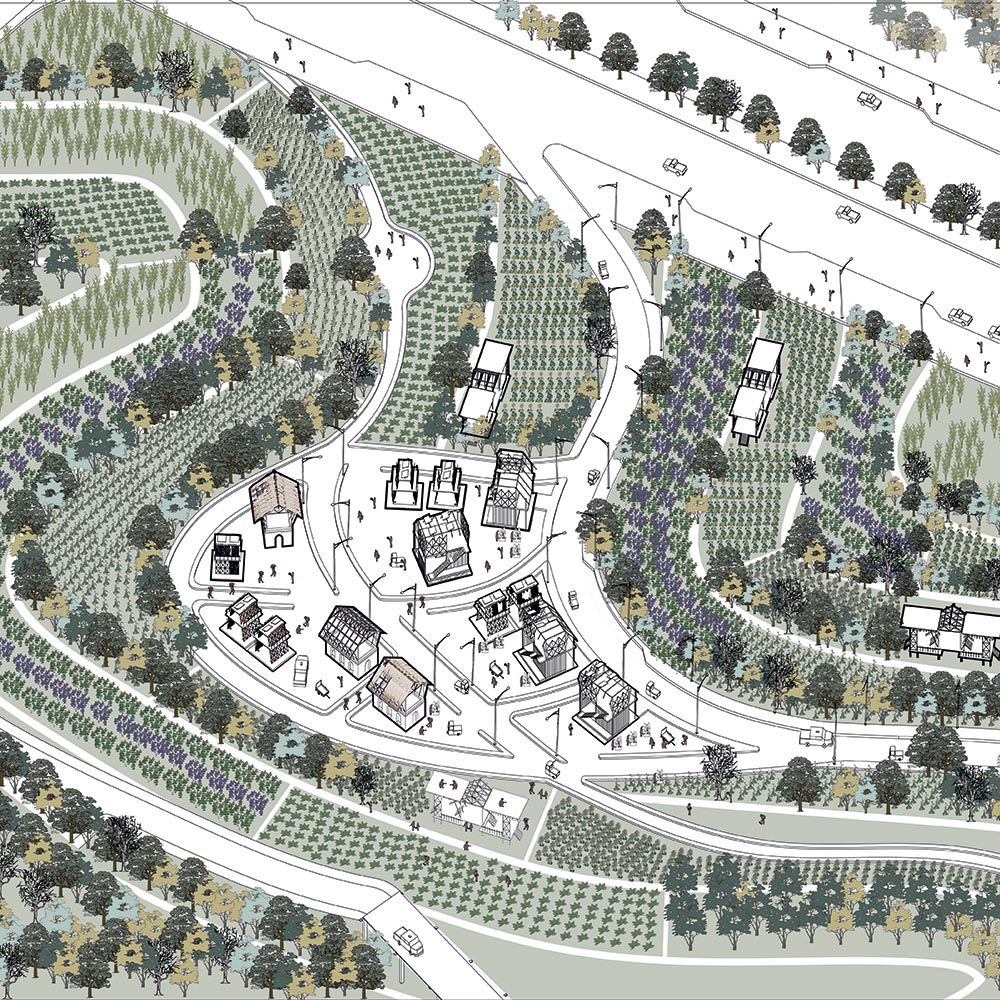The river bed has historically been a fertile landscape for growing and for many vulnerable communities such commons are economic backbones. Extracting water, drawing out rich soils, fishing, harvesting flora or rearing cattle can be seen within the site. Some of these activities, if not managed, can be detrimental to the health of the river and can have lasting negative implications. Therefore, based on the principles of the economist Elinor Ostrom the Shared scapes project is a self organizing and self regulating design for productive landscapes. The design has three zones: agro- forest, conserved forest zone and riparian based on the terrain and vegetation cover. It creates a system for plantation, architectural inserts for supporting infrastructures and a system of policy framework for availing land and managing resources. It is a first-of-its-kind public area that not only empowers communities but also provides multidimensional benefits.
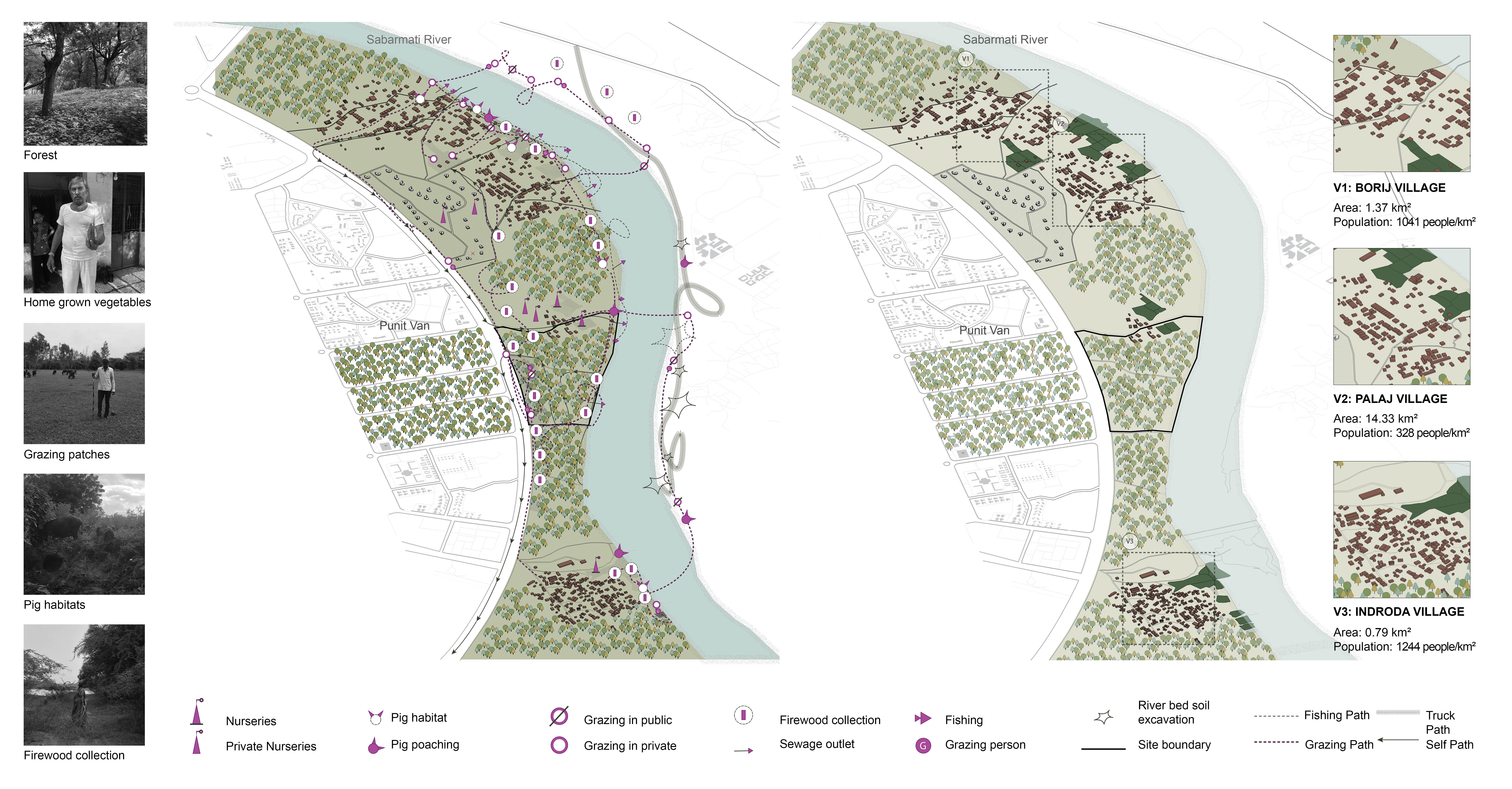
The river bed has historically been a fertile landscape for growing and for many vulnerable communities such commons are economic backbones. Extracting water, drawing out rich soils, fishing, harvesting flora or rearing cattle can be seen within the site. Some of these activities, if not managed, can be detrimental to the health of the river and can have lasting negative implications.
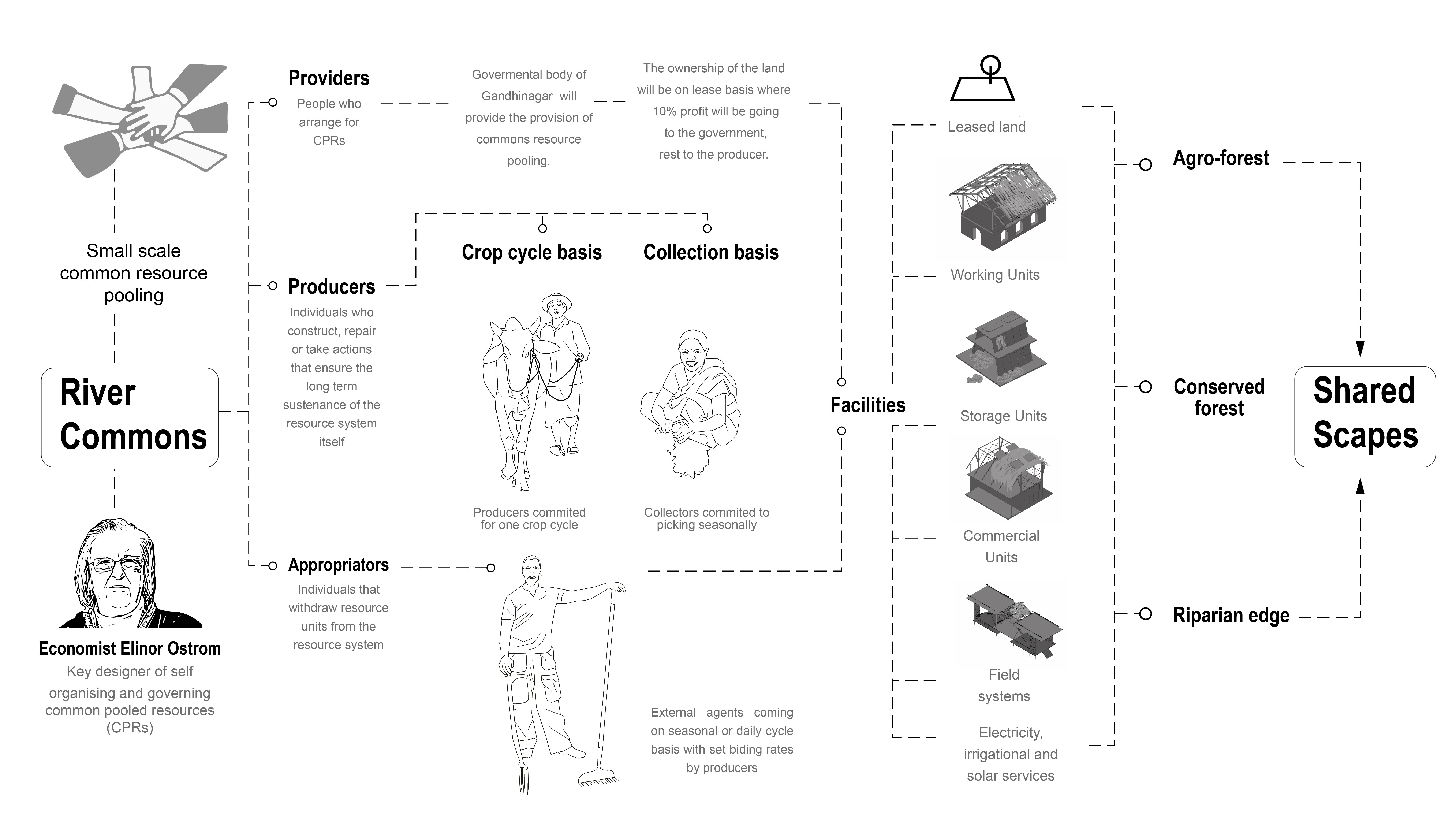
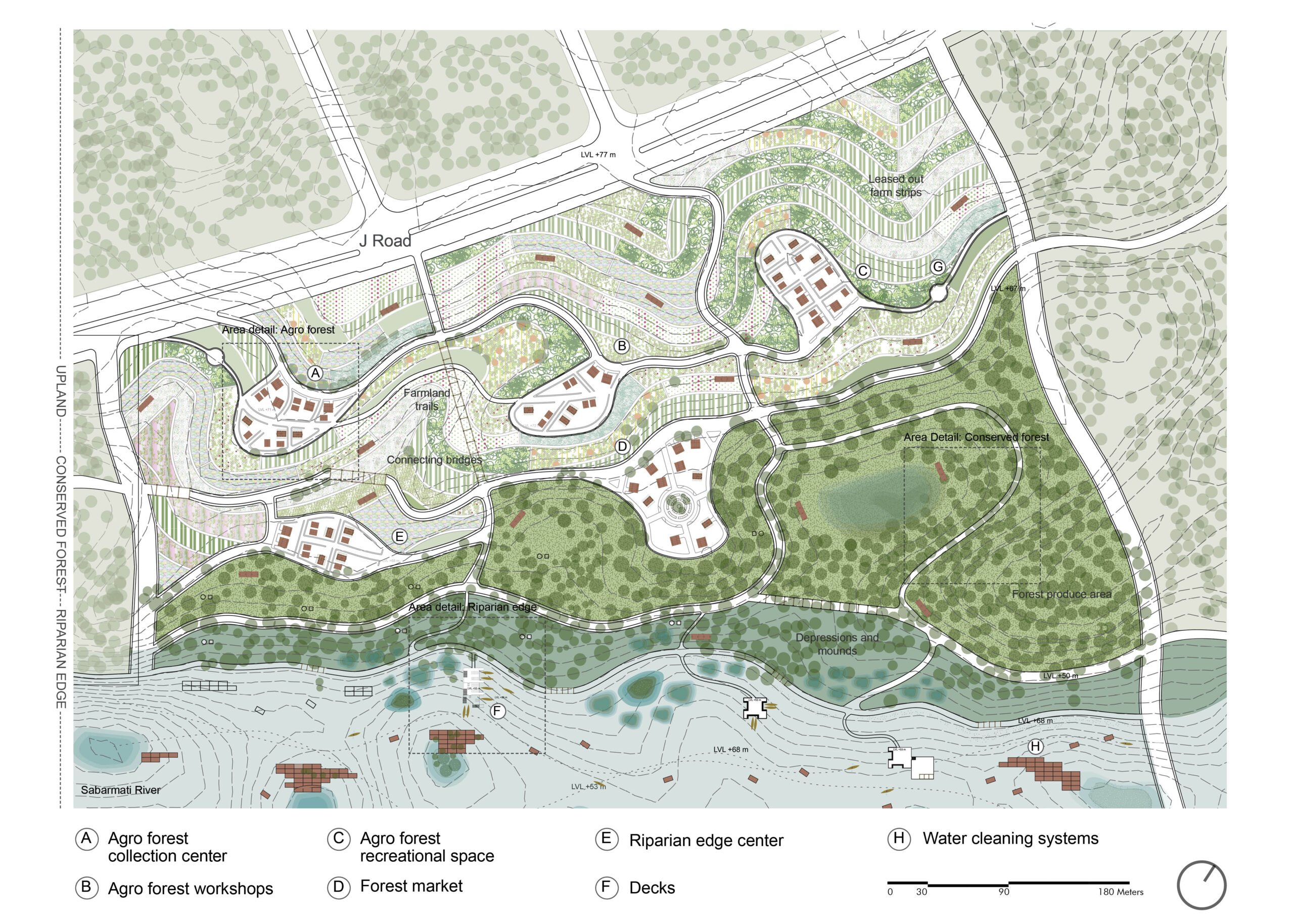


Inserts facilitating services: Agro forest zone
Provided units for working, storing, and commercial activities
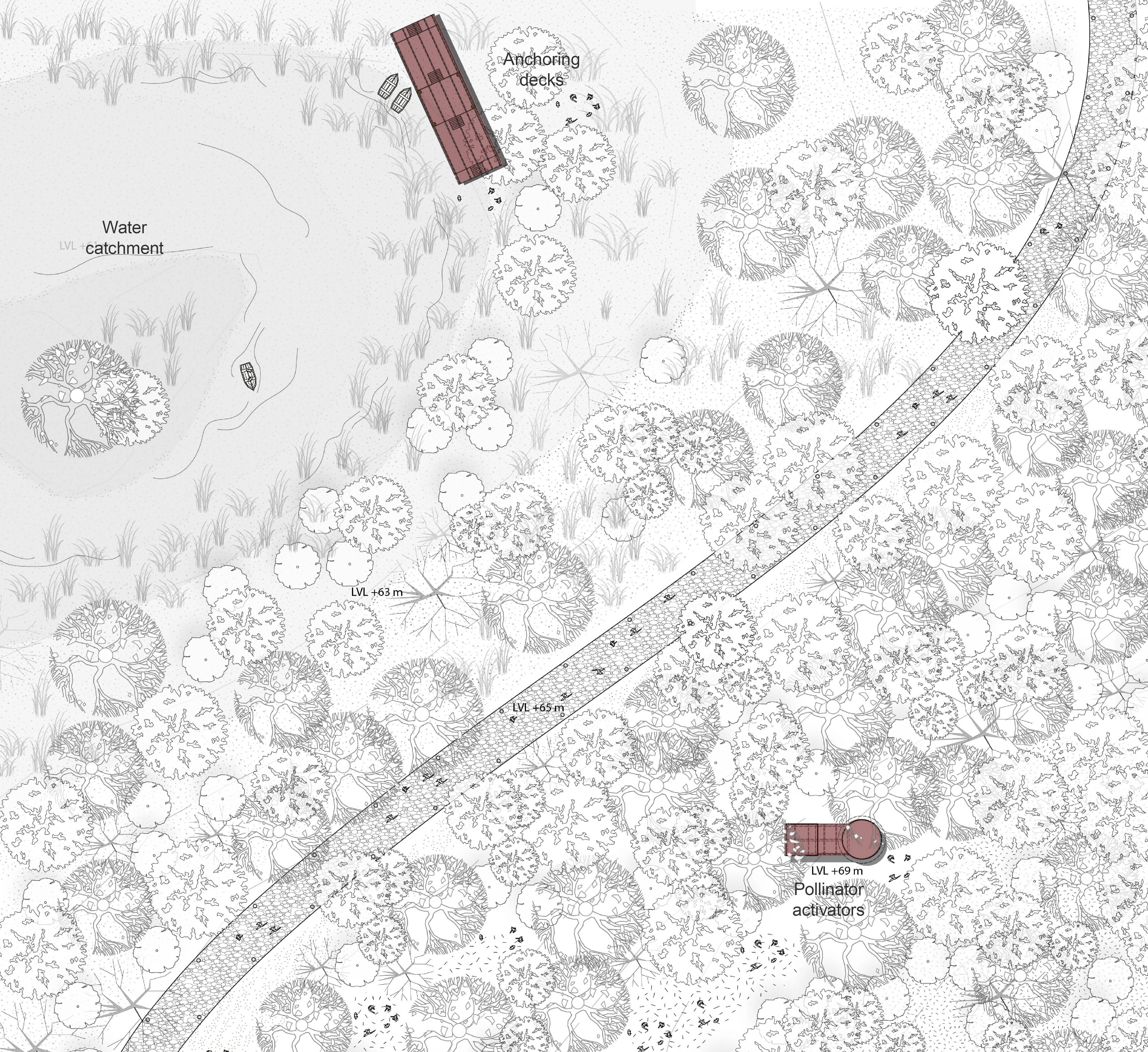

Inserts facilitating services
Provided units for working, storing and biodiversity
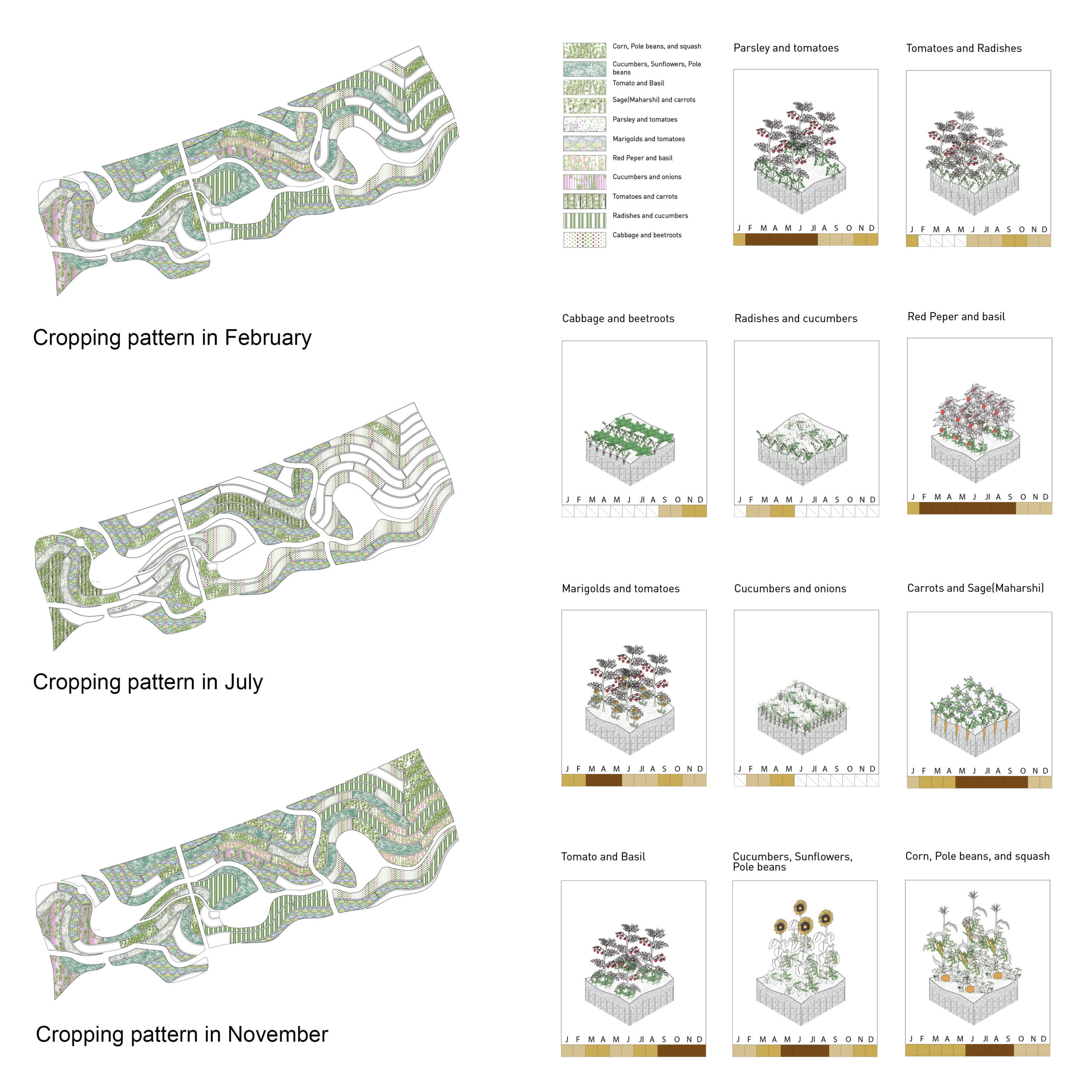
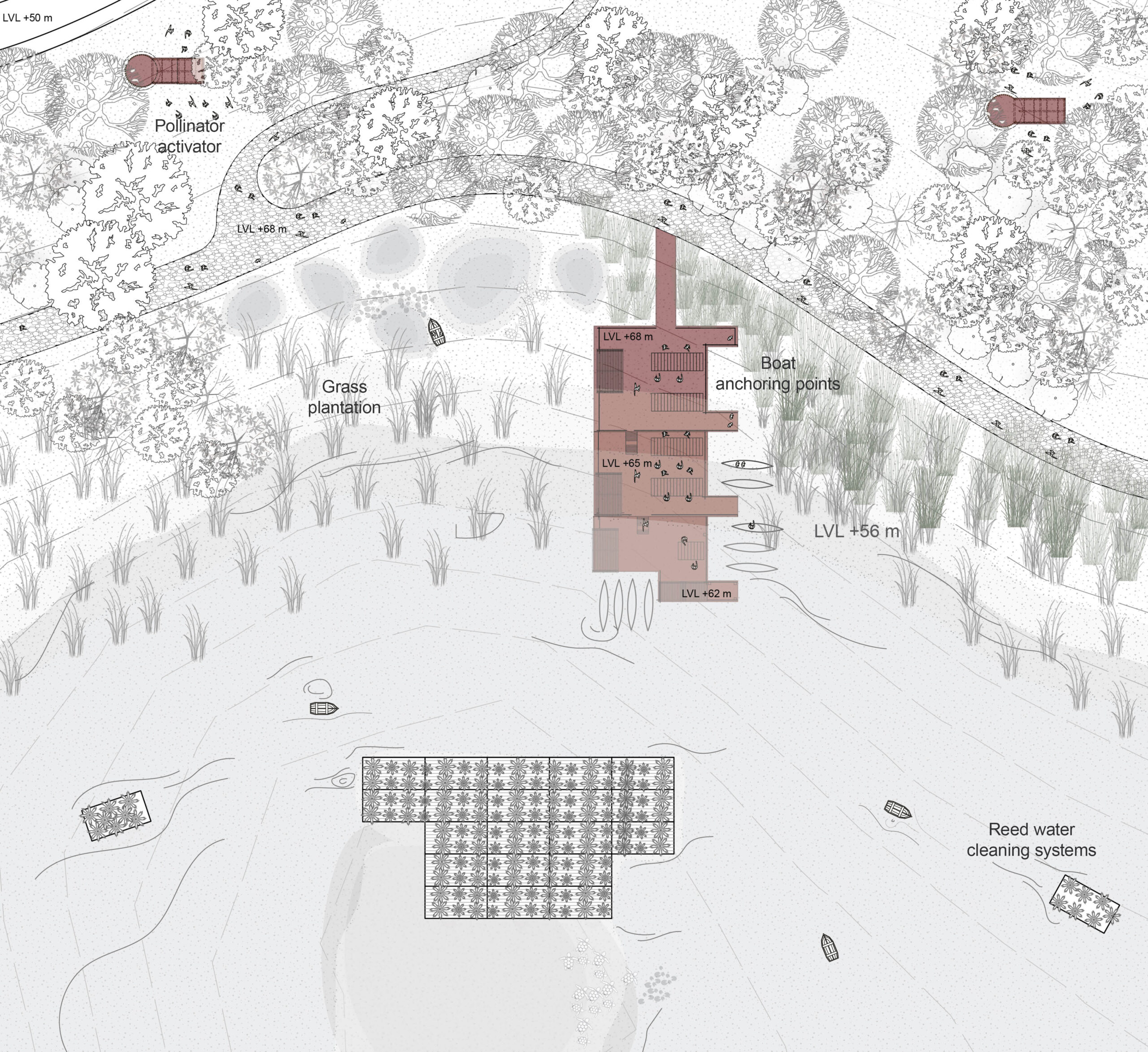
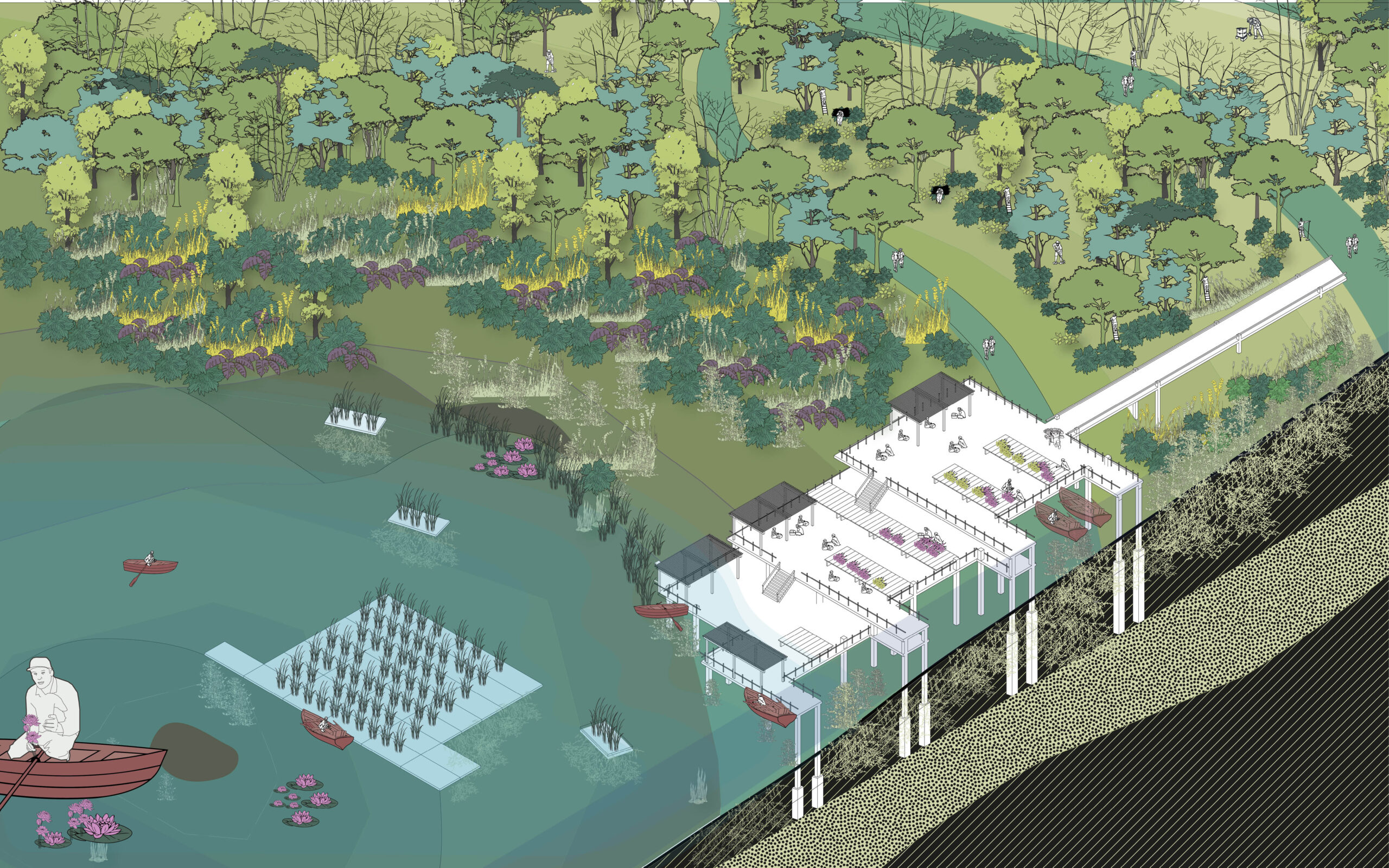
The riparian zone has either mounds or depressions, hosting aquatic life. Many parts are inaccessible as the season changes. Programs include fish ponds, lotus habitats, fish drying decks, PH monitoring decks. As the seasons change the cultivation changes. In spring lilies grow while in winter the pond becomes home to various fishes.


Self-organising and regulating design for productive landscapes Based on the ideas of economist Elinor Ostrom of governing and managing urban commons



